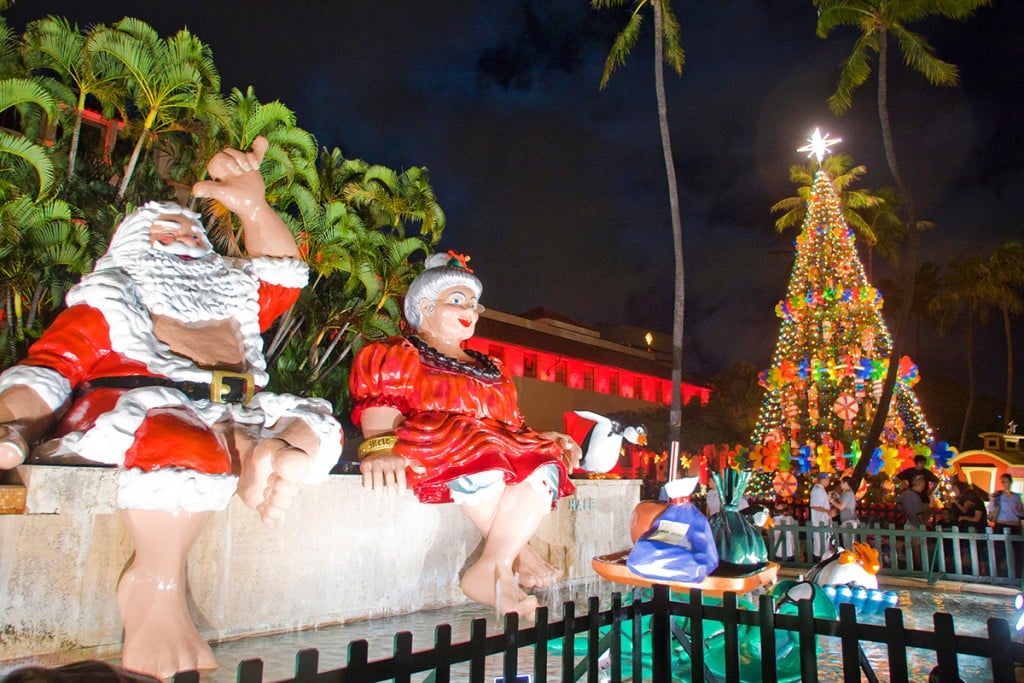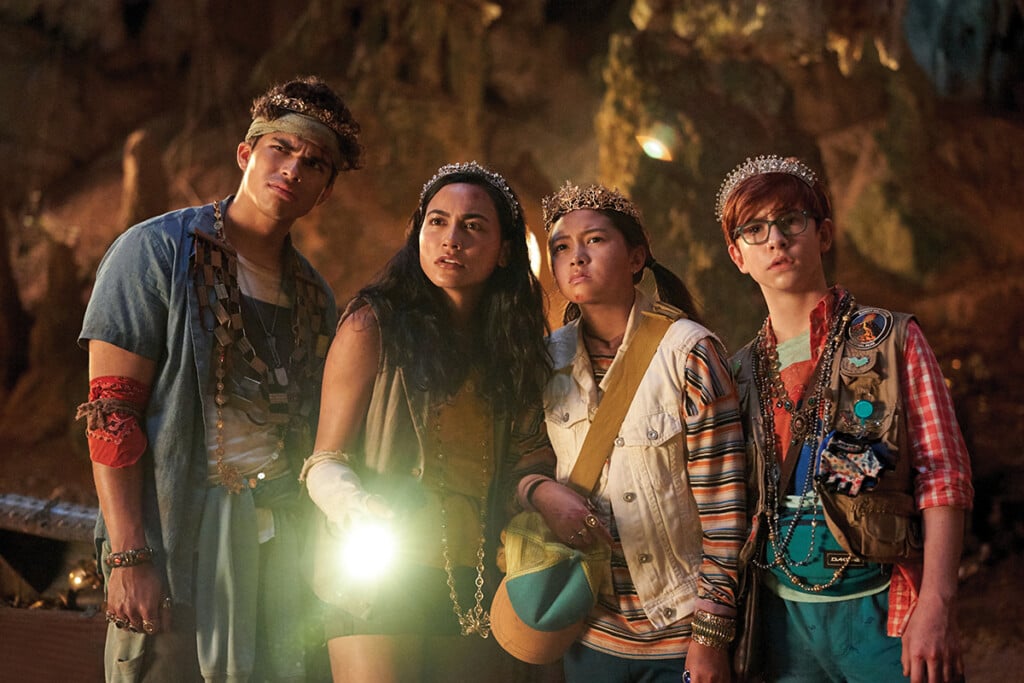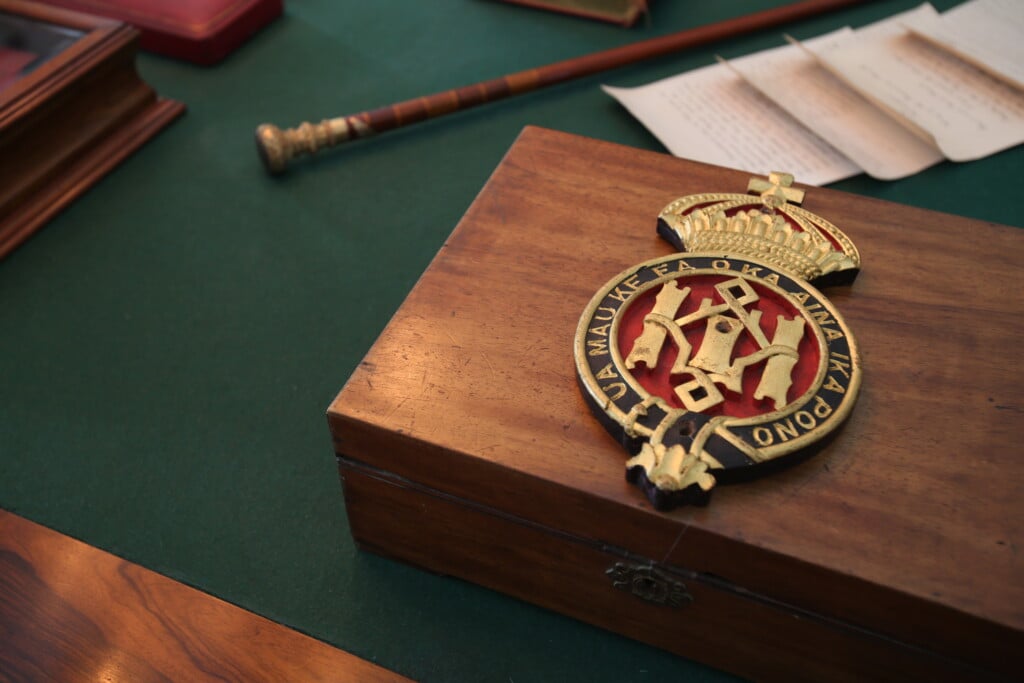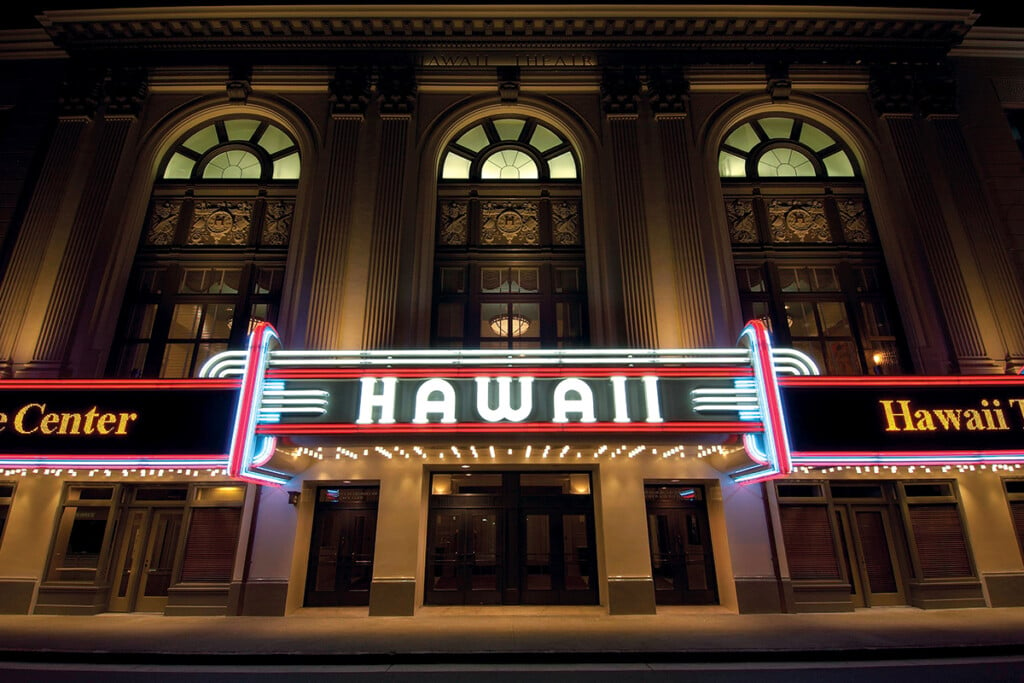Meet Santa’s Behind-the-Scenes Helpers in Hawaii
These real-life elves help light up Honolulu Hale every year for the monthlong Honolulu City Lights.

Did you know Santa’s elves are real?
At least, in Hawaii they are.
But instead of working at a toy factory at the North Pole, these holiday helpers work in government buildings, juggling their day jobs as Honolulu city employees with their holiday seasonal assignments. And while they might not be making toys for the keiki (kids) of Hawaii, they toil away diligently on this monthlong event that brings the magic of the Christmas season to the tropical climes of the Islands.
“Honolulu City Lights is a gift from the city and county and the employees of the city and county to our residents and visitors,” says Sheri Kajiwara, who is director of Honolulu City Lights as well as the city’s Department of Customer Services.
Kajiwara, with help from hundreds of other city employees, puts on the annual holiday celebration, with an array of larger-than-life Christmas-themed displays, as well as a 60-foot-tall locally grown fir tree, set up around Honolulu Hale, the official seat of the city government in Honolulu’s Downtown district. And while it may seem that these merry displays magically appear, it’s not actually a Christmas miracle that makes the Honolulu City Lights happen. It’s really a labor of love.
“I have been involved in various aspects of the project from 1994 to now, and I’ve always loved it,” says Kajiwara. “I love to see people enjoying it.”

Photo: Aaron K. Yoshino
While Kajiwara has been involved with the program for over a decade, the event itself is actually already in its 35th year. Honolulu City Lights has grown from its humble beginnings under then-Mayor Frank Fasi. Back then, the center of attraction was a normal-size fir tree covered in tinsel. Today, it’s an extravaganza.
“Honolulu City Lights got bigger,” says Kajiwara, “and the tree got bigger, too.” She’s referring to the giant fir tree—some years it’s even taller than 60 feet—donated to the city each year by a local grower and decorated from top to bottom. (Last year Olomana School in Kailua donated an 80-foot Norfolk pine, which had been planted near the school’s parking lot 40 years earlier.) The amount of work put into the holiday event has also grown: There’s now an opening night tree-lighting ceremony, a sister event in Kapolei called Kapolei City Lights, and the Public Workers Electric Light Parade, in which government vehicles—garbage trucks, fire engines, police cars , ambulances and more—are decked out in lights and driven through Downtown Honolulu.
Operating such a large-scale event is no easy task, and it takes more than a village—or a city department—to make things work. The city employees involved volunteer their time to the project, and each city department has its role. The Department of Parks and Recreation, for example, handles the maintenance and upkeep of the displays, electricians from the Department of Facility Maintenance work on the lighting, the Honolulu Police Department covers transportation of ornaments, the Department of Customer Services is the lead agency and creates the schedules, and the Honolulu Mayor’s Office of Culture and the Arts manages Kapolei City Lights. “Because it’s a gift from the city, we try to involve every department that’s willing. We will put out a call for help and departments will send people over,” says Kajiwara. “It’s a menagerie of talent from the city employees that come together.”
Of course, no matter how talented and hardworking your employees are, no matter how long volunteers have been helping, the event doesn’t always run perfectly. “One year, the snowman’s head fell off while we were transporting him, and it went rolling down the freeway,” says Kajiwara. “We move ornaments pretty early in the morning, and a lot of kids were on their way to school, and they had to watch his head rolling down the road.” Another year, one of Rudolph’s antlers hit a light post and fell off. One look at the uni-horned reindeer, and Kajiwara and her fellow elves lopped off the other antler. “And that’s how Rudolph became a doe,” says Kajiwara, laughing. So, when mishaps happen, where do the damaged decorations go?
To a man named Dan.
“He’s so tall his head has to come off,” says the Department of Parks and Recreation arts and culture specialist Dan Nakamoto, staring at the disembodied head of a snowman stored in the city’s Pearl City warehouse. When October rolls around, Nakamoto’s Parks and Recreation duties shift from arts and culture to a full-time seasonal position that involves cleaning, fixing and repairing the gargantuan holiday decorations that go on display every year.

Photo: Aaron K. Yoshino
Why does it take so long to polish up these ornaments? Just reaching the damaged areas is the hardest part of the job. “We have to get a ladder or scaffolding. You can’t just go over there and touch them up,” says Nakamoto. “You’ve got to plan out your approach. Will we need a lift? Will we need scaffolding?” All of this is done after Nakamoto has assessed what displays have been damaged, either through transportation or from natural degradation, how badly they’re damaged—major blemishes on one decoration can take a week or more to repair—and which ornaments will be repaired first, since moving these massive models, like the 13-foot-tall snowman and Santa Claus, who weighs over 2 tons, is a herculean task in itself.
The warehouse itself is a sight to behold. All of your holiday favorites are here: Santa Claus in his buttoned-down aloha shirt and shorts, Mrs. Claus in her matching muumuu, a snowman family dressed for warmer climes. Tucked away are some older, less-used decorations like a smiling caricature of a Hawaii resident in the back of the warehouse. Nakamoto explains that these older ornaments have fallen out of the rotation. He also mentions that many of the displays in the warehouse were actually built by city volunteers, which is surprising since so many of them look professionally crafted.

Photo: Aaron K. Yoshino
Although Nakamoto works with only one part-time employee for most of the repairs, the city comes together during a weeklong period, when each of the decorations are hand-washed before being transported to Honolulu Hale. And according to Nakamoto, there are no Christmas miracles to help with the process. “It’s just hard, hot, dirty work,” says Nakamoto, standing next to a set of ABC blocks the size of a small car. “Once it’s past lunch, you’re taking a break every half hour because it’s so hot in here.” But, he adds, “it’s fun work.”
Nobody knows more about bringing together city employees than Coranne Park-Chun, who is affectionately referred to as the city’s head elf. “I’m the go-to person; I assist Sheri Kajiwara as the overall coordinator,” says Park-Chun, who started with the city in 2013 as Kajiwara’s assistant. “I gather all the other elves together to make this work.” She creates volunteer work schedules and calendars as early as July, six months before the festivities get underway.
Like many of the volunteers, Park-Chun also has fond memories of her time attending Honolulu City Lights before she was a city worker. “I used to work across the street, and my kids would meet me and we used to go to the event together,” she says. “It’s the kids that get all excited.”
Seeing how local residents and visitors light up is what makes it all worth it for these volunteers. “There’s a lot of work, blood, sweat and tears, aches and pains,” says Park-Chun. “But it means a lot, because in the end, when it all comes together, it’s about the kids. I’m a kid person. If the kids are happy with it, I’m happy with it.”
Honolulu City Lights is on display from Dec. 7, 2019 to Jan. 1, 2020, at Honolulu Hale, 530 S. King St., Honolulu, Oahu. The opening night tree-lighting ceremony and Public Workers Electric Light Parade are on Dec. 7. For more information, visit honolulucitylights.org.


